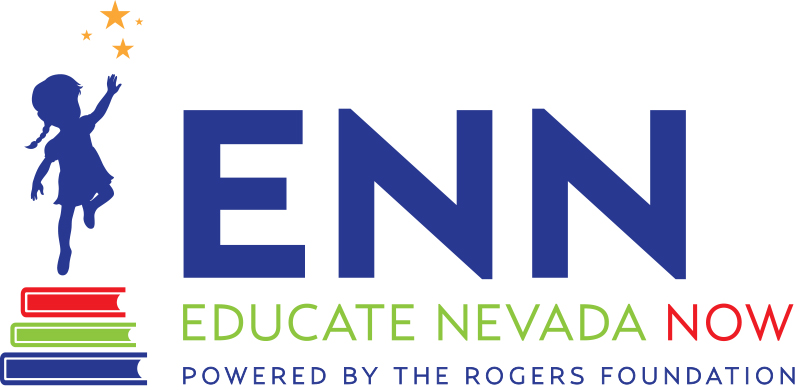Opinion: When funding education, let’s make sure we get a return on investment
This Op-ed first appeared in The Nevada Independent on April 12, 2o17. Read the original version here.
By Sylvia Lazos
When it comes to fixing a troubled education system, you can’t just throw money at the problem. There is no doubt, however, that money is a necessary condition for offering better opportunities to every student.
As the Legislature works hard to find additional taxpayer dollars for schools, there are two important factors to consider: 1) Is it enough to make a difference? and 2) Are the monies wisely invested?
ZOOM and Victory Schools, two bipartisan programs that serve students with high English Language Learner (ELL) and low-income or Free and Reduced Lunch (FRL) populations, respectively, have shown that having appropriate funds can make a real difference for our most vulnerable students.
In our Victory and ZOOM schools, achievement is rising, parents are getting more engaged, and teachers and staff are proud to be part of programs that work.
A recent third-party evaluation concluded that these programs had significant student achievement returns (return on investment or ROI) and recommended that the state stay on track.
Why do Victory and ZOOM work? These schools received enough funds to implement strategies that are proven effective — free Pre-K, Reading Skills Centers, extended school years, extra funds for recruiting and sustaining teachers, social workers on site, etc. Strict guidelines in the law ensured the funds were well spent.
At ZOOM schools in Clark County, 60 percent of students show above average improvement, 92 percent of Pre-K students are exceeding in language and 70 percent of kindergarten students are on track in literacy.
In Victory Schools, we are seeing for the first time in many years schools with large low-income student populations being fully staffed due to teacher recruitment incentives. The Las Vegas Review-Journal recently reported “a majority of the two dozen Victory Schools in Southern Nevada reported double- to triple-digit gains in the number of students reaching proficiency in English and math since they received the money.”
These are real, tangible results in student academic achievement. These are the kind of results we need to get Nevada out of last place in education.
However, this session some are arguing that the Legislature should reject the governor’s proposed expansion of ZOOM and Victory funding into approximately 50 more low performing schools in favor of a “universal weight.” The idea is to gut the expansion of these successful programs and spread the money across the board in the name of “equality.”
It’s hard to figure the math that interest groups are using to further their ends, but putting the best face on this proposal, the increased amount would be a per-pupil allocation of $500 for ELL or FRL students. Compare that to about $1,200 per pupil that students are receiving in Zoom and Victory schools. How are we to expect the same successful results with less than half the per pupil funds?
Yes, it’s true we likely won’t have the funds necessary to fund every ELL and FRL student appropriately during this session. SB178 recognizes that we need to put in place a plan to be met over a series of bienniums, so that we can fully meet our financial obligations to our children. Then, and only then, we can safely discuss spreading the funds across all schools as we begin implementing a weighted funding formula.
Right now it would be unwise to spread already scarce resources across many schools. Wouldn’t a little bit of money yield at least a little bit of results? No, it just doesn’t work that way. The community has looked on with frustration for years as Clark County School District (CCSD), with small incremental increases in funds, has failed to turn the district around.
ZOOM and Victory have succeeded where many other initiatives failed because the programs were feasible, limited and came with a blueprint.
Interest groups may argue that it is “fair” to spread scarce funds around, but it’s not equitable.
There are 30,000 children in CCSD and 1,300 children in the Washoe County School District who are locked into low performing (one and two star), high ELL (25 percent or more), or high poverty (80 percent or more) schools. These students don’t benefit from the Victory or ZOOM programs. Receiving half as much per pupil money as their counterparts, as suggested by some special interest groups, will not enable the interventions those students need. If we stick to the governor’s plan of expanding the Zoom and Victory programs, most of CCSD’s 30,000 would receive the funds their schools need to change teaching practices at their schools.
In practice, Victory and ZOOM funds have been prioritized by being allocated first to students who are in low-performing schools that are racially segregated. This is both an equitable and fair way to allocate scarce funds. Kids who are starving don’t need crumbs; they need sustenance, and that’s what Victory and ZOOM funds do.
It is the Legislature’s constitutional obligation to ensure all students have the funding necessary to succeed. Adults who care about kids should pressure the Legislature to meet that mandate. Meanwhile, we shouldn’t let highly vulnerable children fall through the cracks. ZOOM and Victory are transforming the lives of so many, and now is not the time to start on a path that is unproven and will not effectively reach the neediest in our community.
Sylvia Lazos is the Justice Myron Leavitt Professor at William S. Boyd School of Law, University of Nevada, Las Vegas. She is also the Policy Director for Educate Nevada Now, a coalition in support of school finance reform and improved educational outcomes supported by The Rogers Foundation.
